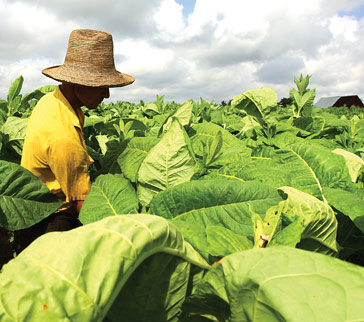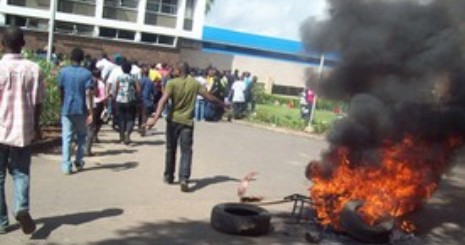As the Lilongwe Water Board (LWB) contemplates finding a river from which to construct another dam to supply water to Lilongwe City residents, an irrigation expert with Malawi’s green revolution project, the Green Belt Initiative, Dr. Henri Njoloma says the southern African nation requires more hydrological experts to predict rainfall patterns and water run offs if the country is to achieve the millennium development goal on water. Njoloma says if the country had more well versed water experts who would predict hydrological events, Malawi would be on the right path to achieve its millennium goals in water resource planning and management. The sentiments were raised following a study conducted to show how rainfall-runoff could be used in Malawi to help in decision making on the proposed construction of hydraulic structures such dams and bridges on the Lilongwe river. Lilongwe is one of the best maize and tobacco production regions in Malawi which have expanded production growth steadily over the past years making it one of the country’s bread baskets.
The Second Lilongwe Water Supply Project aims to extend and improve the water supply system of Lilongwe, Malawi’s capital city, to strengthen Lilongwe Water Board’s (LWB) management and operational efficiency, and to study future options for Lilongwe’s water disposal and sanitation systems. The project includes construction of a new earthfill dam, remedial works on an existing dam, extension of the water treatment plant and of the water distribution system “Dams often cause hydrological changes in the downstream thereby affecting total water flows as well as impact on seasonal occurrence of peak run off leading to flow fluctuations,” observes Njoloma but is quick to add that despite this downside, dam construction and water development projects have more benefits in Malawi. “For instance, there is a consensus that dam development remains the most viable option for water resources development and consequently economic development,” he says. “To make good judgments on all factors central to reservoir construction, it is therefore important to carry out analysis of stream flows as a way of helping the decision making on issues that have an impact on the hydrology and environmental management,” says the expert adding that there is also need for more training and research in hydrology so that there is more local Malawian expertise to deal with hydrological modeling requirements in the catchments of the country.
He points out that in most instances, water bodies created behind dams often alter upstream habitats while at the same time they create adverse changes in flow on the downstream leading to extensive ecological degradation and loss of biologic diversity. The Malawi government has since 2006 embarked on an aggressive water harvesting and management strategy which aims at building more dams to support different social and economic sectors, mainly the irrigation sector whose development is far below its maximum potential. The Lilongwe River catchment area is in central Malawi spanning from the Dzalanyama mountain range on the western Malawi-Mozambique border to Lake Malawi on the eastern side. It winds through the forest reserve of Dzalanyama, through the Kamuzu Dam and through the country’s capital city, Lilongwe, up to Salima where it pours into Lake Malawi. The estimated area representing the Lilongwe River catchment which stretches up to the confluence in Salima is 4,940km2 with Linthipe River accounting for 3,936km2 of the total catchment area.
The river has several tributaries with the Linthipe River sub-catchment being the largest. The water expert says the study used validated parameters to simulate rainfall runoffs between 1961 and 1989 before the Kamuzu dam was constructed and between 1990 and 2005 after construction. Njoloma says the study used simulated runoff to predict the maximum probable floods for a 10-year, 20-year, 50-year, 100-year and 1000-year periods. “The comparison between the maximum expected floods in the period before dam construction and after dam construction indicates a reduced flood of about 8% in all return period scenarios,” the study found pointing out, “The dam construction is one likely factor that has contributed to this reduction”. The Kamuzu Dam is a domestic water utility dam whose water is distributed to over 500,000 residents of Lilongwe City. It is also a major source of water for river line informal irrigation agriculture
The river passes through a very rural area where populations have relied much on the environment for their survival. Agricultural production is a typical characteristic of the catchment and there is evidence in the catchment of environmental degradation and excessive cutting down of trees. “As a consumption water source, the dam directly affects the amount of water available as runoff,” he notes, adding that with the city population growing steadily, “any future plans in extracting water from the river either for irrigation agriculture or domestic and industrial consumption should take into account that the flow as shown in this study will reduce further with any extra dam construction and will require an alternative catchment source.” Njoloma points out that although the study did not assess how the low flows were affected by the construction of Kamuzu Dam, the study assumed that flow was going to decline especially in the dry season because of combined high water demand and the tendency for Lilongwe Water Board to maximize water uptake for the domestic supply to the city.


.jpeg&w=60&q=100&h=60)





.jpeg&w=60&q=100&h=60)




